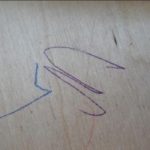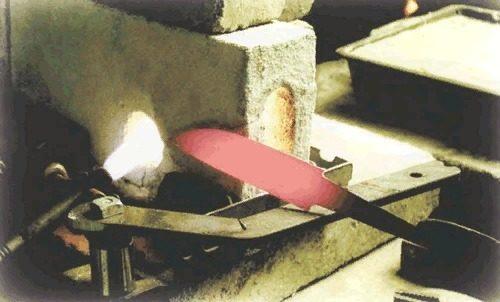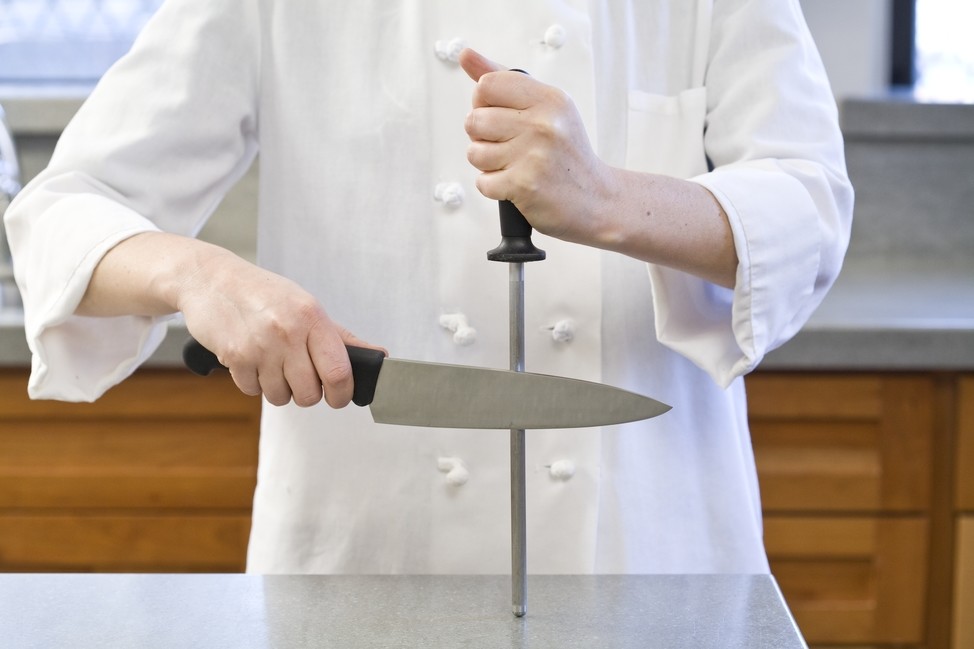How to make a handle for a knife
Many people have a certain weakness for edged weapons. Some people don’t buy it, but try to make it themselves to suit their needs. Naturally, if a person forged a blade for himself, then he will try to make the handle himself. Let's figure out what shape the handles come in, what material they are made of and how they are attached to the blade.
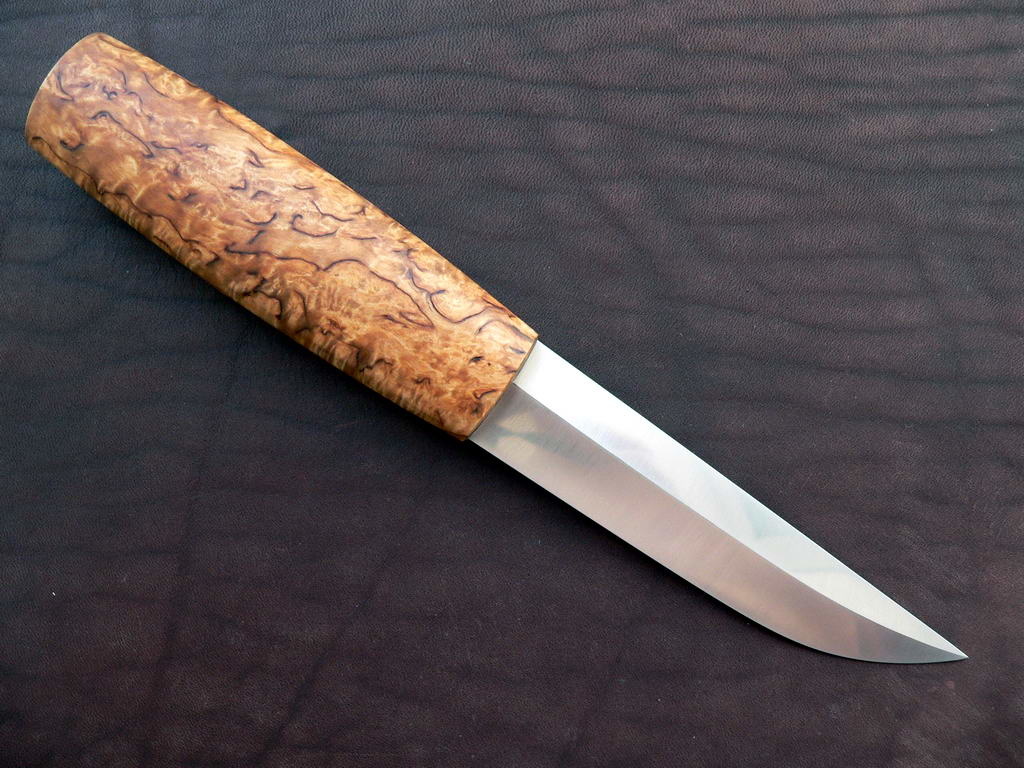
The content of the article
How to make a knife handle yourself
In most cases, the material for the handle is wood, but this is not at all necessary. To create an element, you can use absolutely any materials.
Required Tools
It is the selected “raw materials” that will be the determining factor for the selection of tools. If you have to work with wood, you will have to stock up on various impregnations in order to protect the finished product not only from moisture, but also from other negative influences.
Wood is more often used because it is easy to obtain and easy to process. To manipulate it, you will need cutters, various chisels, and possibly an engraving machine. When using metal, you cannot do without a vice and abrasive stones. If the material is strong enough, then electric tools will be used. These are jigsaws, electric drills and much more.
How to decide on the shape and size of the handle
No one has yet come up with special standards for a knife handle.The main thing is that it lies comfortably in your hand. For a good product, this part will be larger than the palm, about 3–3.5 centimeters. If we consider the handle of a hunting blade, then when you wrap your hand around it, the thumb should only slightly overlap the index finger. At the same time, he will not touch either the middle or ring finger, much less the little finger.
The shape of the handle is a special parameter. Too heavy is not always convenient. And it causes a lot of problems in manufacturing. Experienced craftsmen give preference not to unnecessary beauty, but to practicality. Therefore, straight or oval shapes of handles are most often found. But be that as it may, it is up to the master himself to decide what this part will be like. And here you need to follow one, but very important rule: the handle must be made in such a way that it is pleasant to handle the tool.
Material selection
Craftsmen use a variety of materials to make knife handles. Natural raw materials (wood, leather, metal) and all kinds of chemical industry products (rubber, plastic) are used. The choice of a particular material should be based on experience working with it, and personal taste.
Tree
Most often, knife handles are made of wood. Usually, harder types of wood are used for this. These include walnut, ash, birch, beech, cherry, hornbeam, oak, and maple.
But often there is a desire for the handle to be not only durable, but also to stand out among others. Then you should pay attention to the exotic. In our area you won’t find merbau, amaranth, bubinga or zebrano. But this wood is durable and looks very chic. For a knife handle, this is it!
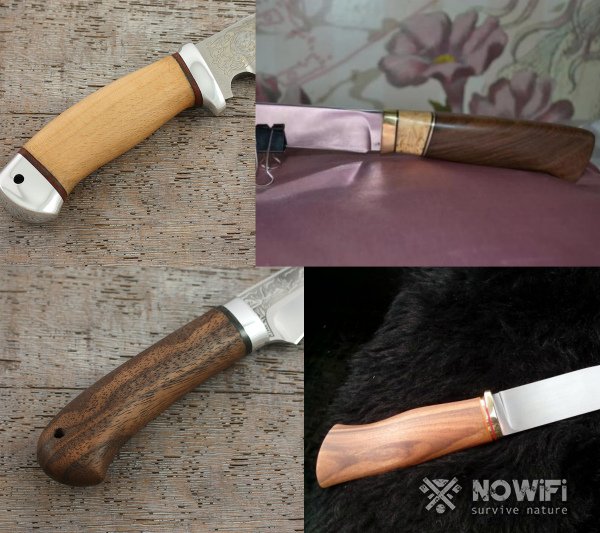
It may also happen that a piece of wood of the required size simply is not at hand.In this case, no one bothers to use a piece of parquet board. It's no secret that all floor coverings are made from hardwood.
It is difficult to argue that in some aspects wood is inferior to synthetic materials. After all, the latter wear out less and are more durable. But natural ones are easier to process, they have a unique texture and fit well in the hand. And it’s nice to use such products even in winter.
Birch bark
Birch bark is also used as a material for the handle. It is very accessible and you only need a few tools to work with it. The advantage of the material is that it contains birch tar. This substance perfectly protects against rot and moisture. Birch bark conducts heat poorly, which makes it possible to comfortably use the knife in any temperature conditions.
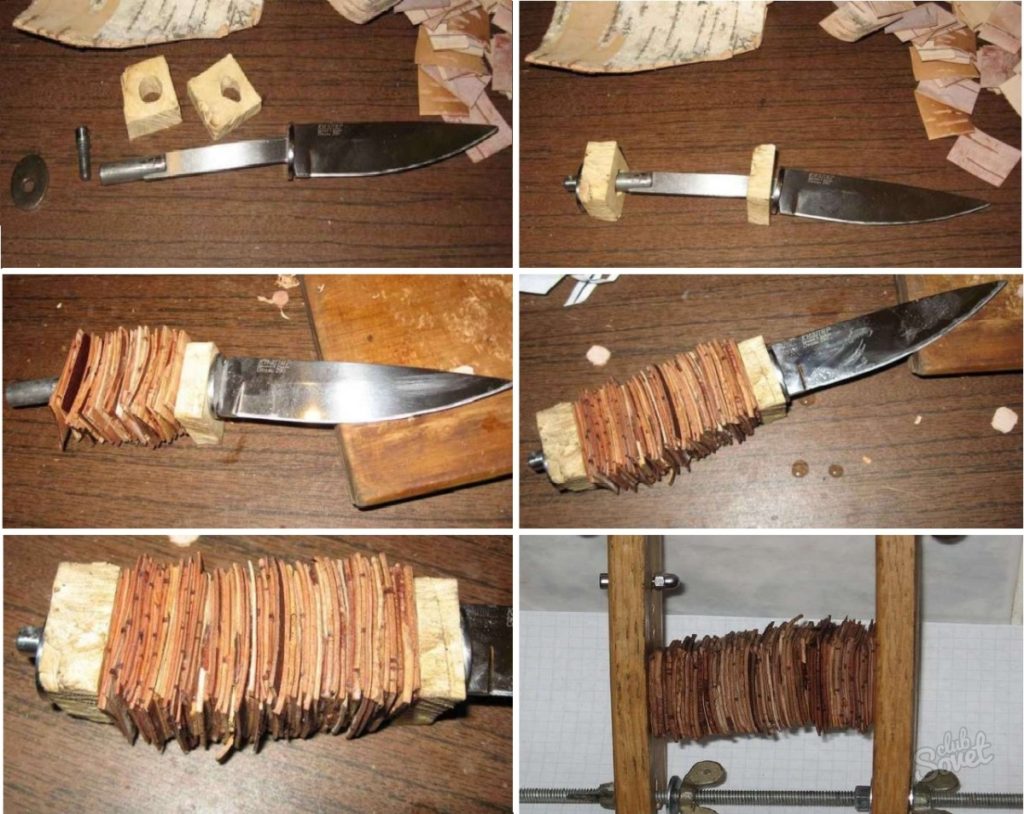
A top layer of birch bark is required. The material is cut into small pieces, which are treated with epoxy and turned into a briquette using a vice. Since this material is simple to manufacture, the handle can easily be made in just a day. Of course, birch bark also has a drawback - it absorbs odors well. If you constantly cut fish or game with a knife with such a handle, then soon it will become saturated with odors that you can no longer get rid of.
Leather
You will often find leather on the handles of knives. Moreover, it is found not only on Finnish models, but also on many others. The technology for working with such material is practically no different from manipulating birch bark.
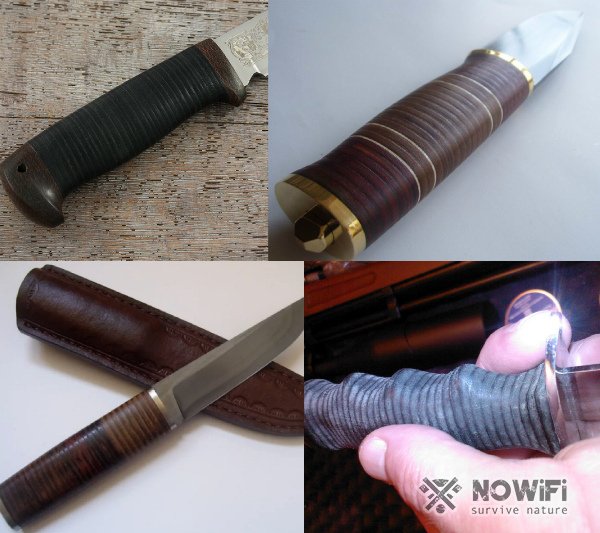
Leather has disadvantages, like the previous material. She absorbs all odors with the same force. This imposes some restrictions. Typically, handles made of this material are found on tourist and camping knives. As a rule, no one uses them to cut fish and game.Yes, and such things need to be handled correctly. Otherwise, the rotting process will begin and the handle will have to be replaced.
Attaching the handle to the blade
Once the knife handle is made, the question arises of how to make it integral with the blade. If it is mounted, then the most basic thing is to use glue or epoxy.
A hole is made in the handle where the base of the blade will need to be inserted. The recess is filled with adhesive, after which the shank is driven inside. The blade is first sealed with tape, which will protect it from contamination with glue. The knife itself is left in this state for two days, having previously been clamped in a vice.
Decorating Tips
Forging a knife and making a handle for it is only half the battle. A good product should emphasize the style and individuality of the owner. This can be achieved with beautiful design. The handle of a knife is exactly the part where the master can demonstrate all his skills and imagination.
Usually the handles are decorated with engraving, braided or carved. A lanyard looks beautiful on a knife, despite the fact that it is a simple loop or cord that is threaded through a hole in the handle. The pommel made of casting or carved looks very rich. But it is better to fasten such elements if the shank has a thread. This should be planned during the development of the entire design.
The easiest way is to paint the handle or burn a pattern on it. To prevent abrasion, the surface is degreased. The main thing is that the degreaser is compatible with the paint base. For example, turpentine works well with oil based ones.
Leather trim
Many craftsmen braid the handles with leather or tighten them. The handle of the knife in such a braid looks natural and lasts a long time.In addition to beauty, the material can give the product a more professional look and smooth out some imperfections. A plastic handle covered with leather will hold your hand much better.
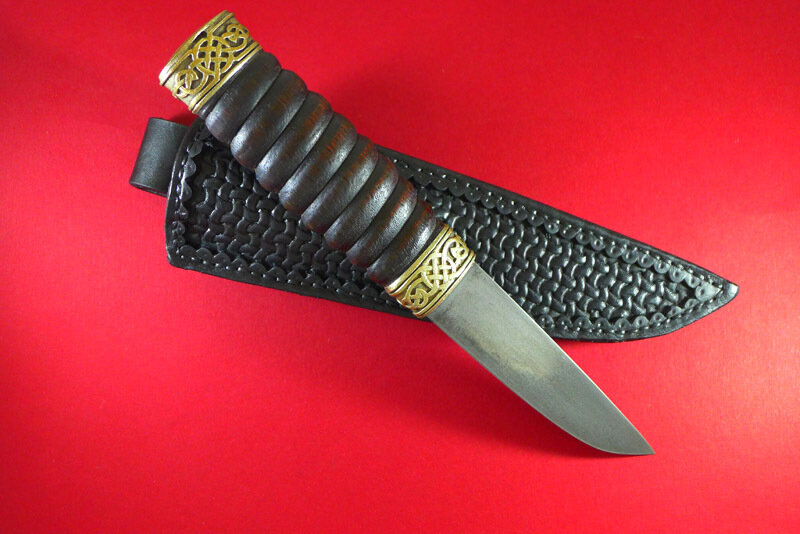
Before stretching this material onto a wooden handle, the surface should be sanded and grease removed. Next, the wood is coated with glue and left to dry. Then the leather is wound in a strip around the handle, after the first turn it is again treated with glue and dried. This is repeated until the procedure is completed. All skin scraps are removed with a blade.
Braid
Very often, knife handles are decorated with braiding. This decoration has become popular due to its simplicity. After all, the braid can be easily changed if it is already tired or has become unusable.
If desired, you can braid it with a leather belt, but usually paracord is used for this. This material is accessible and lightweight. Its prices are low, and it lasts a very long time, as it is not subject to rotting.



